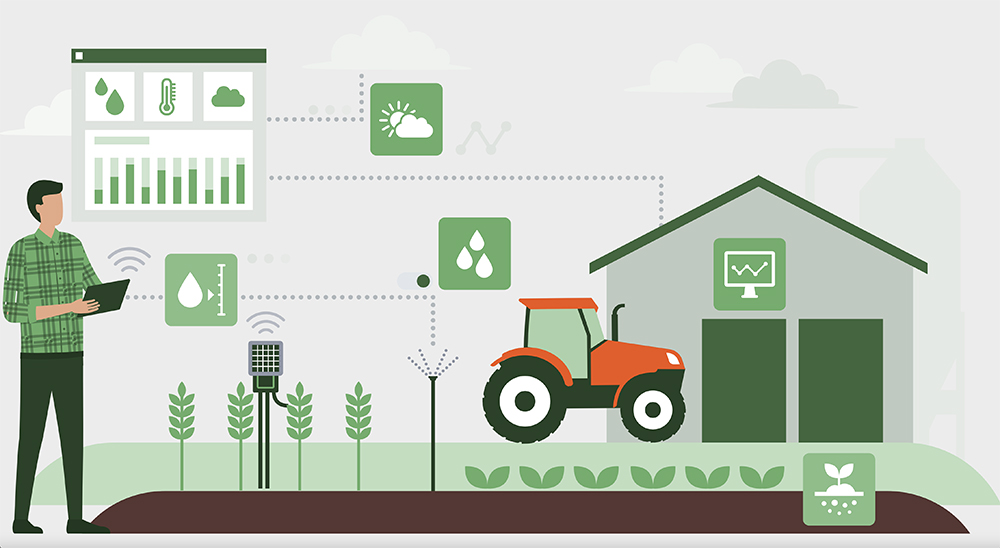While being in the right place at the right time makes things happen on the farm, knowing when and where makes it scalable
REGINA — Ukko Agro provides growth stage forecast and disease models for crops a week in advance by running predictive analytics on information from multiple sources, including on-farm weather stations.
Predictive analytics uses machine learning and statistical techniques from data mining to analyze historical and current events to make forecasts.
During Canada’s Farm Show in Regina, chief executive officer of Ukko Agro, Ketan Kaushish, presented at the Agtech Accelerator event to attempt to secure investment deals with investors in the audience.
Ukko Agro recently secured funding from Ag Capitol Canada and PIC Investment Group, which had representatives participating in the accelerator.
Read Also

Gene editing digs deeper space in Canadian plant breeding
More Canadian research into crop variety development is incorporating gene editing, and one researcher notes that Canada’s regulatory approach to gene editing will help drive innovation
Earlier this year the Minister of Agriculture Canada, Marie-Claude Bibeau, announced up to $875,000 in funding to Ukko Agro to support the development of the analytics platform.
Kaushish said the company helps larger commercial farms keep a close eye on what’s happening with their crops.
“The idea is how can you not just give data to the farm, but how can you give actionable insights and preventive actionable insights that solves both the questions on what do you need to do, and it give enough time for farms to say, ‘how can I prepare to make sure I can take that action?’” Kaushish said.
Agronomic data including seed varieties, planting date and information from agronomy research is used in the modelling.
Kaushish said there are two major ways to build algorithms like programs used by Ukko Agro.
The first is through collecting a lot of data and then use this database to build an algorithm that fits the data.
The second way is to incorporate research that has already been done to build a basic algorithm and then use databases of collected data to improve it.
“We look at different research, different publications, combine them and build our own logic, our own parameters for the algorithm. We would again partner with universities and our clients to get some data and test and then tweak it,” Kaushish said.
Through constant feedback, including from farmers, the algorithms will be improved to work in specific regions.
“We have our own scientific advisory board that helps us in understanding the science behind predicting anything, and then we use database techniques as well. So, we combine both to build these algorithms that can do these kinds of predictions.”
Ukko Agro works with multiple universities across Canada and the United States, and it’s in talks with the University of Saskatchewan about working on projects involving canola and lentils.
“We’ve built the capability to launch a new model within 60 to 90 days,” Kaushish said.
The company is also working with the Global Institute for Food Security and the Canola Council of Canada.
“We’re trying to get whatever brain power there is that worked on a crop, and to find out how we can collaborate with them and get some of that research built into a product farmers can actually use on the ground and take advantage of it,” Kaushish said.
He said information from any brand of on-farm weather stations can be incorporated into the modelling and Ukko has an agreement with a weather station supplier to provide low-cost systems to its customers.
Ukko Agro typically works with retailers, who in turn provide crop and location-specific forecasts in their service to farmers.
A significant benefit of working with retailers is seen when many weather stations are installed in a region, which helps Ukko’s algorithms identify microclimates and improve its forecasts.
“The analytics we provide are being used by ag-chem companies, it’s been used by some of the largest retailers and Saskatchewan to manage their own operations, customer engagement, etc.,” Kaushish said.
Ukko Agro’s algorithms suggest how many weather stations in a region are needed and where to place them. The model also benefits from being fed information on where and under what circumstances plant diseases have been found.
A yield-loss model is being developed to help describe the cost of not applying something.
For instance, if the model recommends spraying the day flowering hits but this activity gets delayed by a few days and disease is present, producers will be given a forecasted economic loss from the delay.
Kaushish said an important part of the application is that it allows farmers to interact with an output.
For example, a grower can get an estimate on the risk-cost rating of stem rot in canola if there were to be a breakout in a week.
Ukko Agro is also working on yield forecasting and insect models.
















